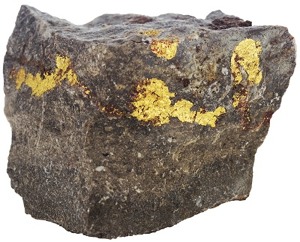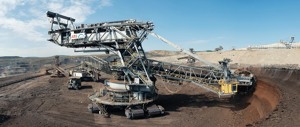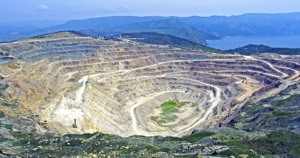Tavex uses cookies to ensure website functionality and improve your user experience. Collecting data from cookies helps us provide the best experience for you, keeps your account secure and allows us to personalise advert content. You can find out more in our cookie policy.
Please select what cookies you allow us to use
Cookies are small files of letters and digits downloaded and saved on your computer or another device (for instance, a mobile phone, a tablet) and saved in your browser while you visit a website. They can be used to track the pages you visit on the website, save the information you enter or remember your preferences such as language settings as long as you’re browsing the website.
| Cookie name | Cookie description | Cookie duration |
|---|---|---|
| tavex_cookie_consent | Stores cookie consent options selected | 60 weeks |
| tavex_customer | Tavex customer ID | 30 days |
| wp-wpml_current_language | Stores selected language | 1 day |
| AWSALB | AWS ALB sticky session cookie | 6 days |
| AWSALBCORS | AWS ALB sticky session cookie | 6 days |
| NO_CACHE | Used to disable page caching | 1 day |
| PHPSESSID | Identifier for PHP session | Session |
| latest_news | Helps to keep notifications relevant by storing the latest news shown | 29 days |
| latest_news_flash | Helps to keep notifications relevant by storing the latest news shown | 29 days |
| tavex_recently_viewed_products | List of recently viewed products | 1 day |
| tavex_compare_amount | Number of items in product comparison view | 1 day |
| Cookie name | Cookie description | Cookie duration |
|---|---|---|
| chart-widget-tab-*-*-* | Remembers last chart options (i.e currency, time period, etc) | 29 days |
| archive_layout | Stores selected product layout on category pages | 1 day |
| Cookie name | Cookie description | Cookie duration |
|---|---|---|
| cartstack.com-* | Used for tracking abandoned shopping carts | 1 year |
| _omappvp | Used by OptinMonster for determining new vs. returning visitors. Expires in 11 years | 11 years |
| _omappvs | Used by OptinMonster for determining when a new visitor becomes a returning visitor | Session |
| om* | Used by OptinMonster to track interactions with campaigns | Persistent |
| Cookie name | Cookie description | Cookie duration |
|---|---|---|
| _ga | Used to distinguish users | 2 years |
| _gid | Used to distinguish users | 24 hours |
| _ga_* | Used to persist session state | 2 years |
| _gac_* | Contains campaign related information | 90 days |
| _gat_gtag_* | Used to throttle request rate | 1 minute |
| _fbc | Facebook advertisement cookie | 2 years |
| _fbp | Facebook cookie for distinguishing unique users | 2 years |
Technological Advancements in the Gold Mining Industry

The demand for minerals and raw materials from sustainable sources is rising because central banks and major economies are committed to reducing their carbon footprint.
Gold mining has been a cornerstone of human civilisation for centuries. With civilisations throughout history valuing this precious metal for its rarity, beauty, and economic significance.
From ancient civilisations searching for gold in rivers to modern industrial-scale operations, the methods and technologies employed in gold mining have undergone remarkable advancements.
In this article, we delve into the realm of technological innovations that are revolutionising the gold mining industry.
Gold Mining

Gold mining, once a labor-intensive and hazardous endeavour, has evolved significantly with the integration of cutting-edge technologies in order to extract the natural resources.
These advancements not only enhance operational efficiency in the short term but also address environmental concerns and improve safety standards in the long term. As the demand for gold continues to rise, with gold prices reaching new highs in April, driven by various industries and investment purposes, the importance of embracing technological innovations becomes increasingly evident.
Traditional Methods vs. Modern Technologies

Historically, gold mining relied heavily on manual labor and rudimentary tools such as picks, shovels, and pans. However, the advent of modern technologies has transformed the industry, enabling more efficient high level extraction methods and enhanced productivity.
Traditional techniques, while effective in their own right, are often limited in scope and efficiency of human activity compared to the precision and scalability offered by modern technologies. These modern techniques allow for a more precise large scale gold mining production.
Artificial Intelligence and Machine Learning

In order to reduce their reliance on fossil fuels and cut costs, gold mining corporations are exploring new technologies and methodologies. These include artificial intelligence (AI) and machine learning (ML).
A significant advancement in the gold industry is the application of AI and ML to boost productivity
By evaluating massive volumes of data from sensors, drones, and other sources, businesses may enhance their mining operations, identify equipment issues, and prevent accidents at mine sites.
AI-powered solutions may also help gold miners with project development planning, performance monitoring, and deposit discovery. We may expect increasingly sophisticated AI and ML applications that will transform the gold business as computer science develops.
Automation in Gold Mining
One of the most significant advancements in gold mining is the widespread adoption of automation and robotics.
Unmanned aerial vehicles (UAVs) and drones are increasingly used for aerial surveys
This allows miners to gather precise data on geological formations and potential gold deposits.
Furthermore, automated drilling and blasting techniques have revolutionised the extraction process, improving safety and efficiency while reducing costs.
Enhanced Exploration Methods
Modern gold mining operations benefit from advanced exploration methods.
These utilise cutting-edge technologies such as satellite imaging and remote sensing
These tools provide miners with invaluable insights into potential mining sites, allowing for more targeted exploration efforts. Additionally, geological modelling software enables geologists to create detailed 3D models of underground structures, facilitating informed decision-making during the exploration phase.
Improved Extraction Processes
Innovations in extraction processes have paved the way for more sustainable and cost-effective mining operations.
Techniques such as heap leaching and bio-leaching offer environmentally friendly alternatives to traditional cyanide-based extraction methods. These processes harness the power of natural microorganisms to extract gold from low-grade ores, reducing the environmental impact associated with conventional extraction methods.
Data Analytics and Predictive Modelling
The integration of data analytics and predictive modelling has become increasingly prevalent in the gold mining industry.
This enables companies to optimise their operations and maximise productivity
By analysing vast amounts of data collected from various sources, mining companies can identify patterns, trends, and inefficiencies. This helps allow for more informed decision-making. Predictive maintenance algorithms also help minimise downtime by anticipating equipment failures before they occur.
For example, Rio Tinto, one of the largest mining companies in the world, has reduced costs and increased efficiency at its mine sites by using autonomous drills and trucks.
Safety Innovations in Gold Mining
Safety is paramount in the mining industry, and technological advancements play a crucial role in ensuring the well-being of workers.
Smart sensors embedded in personal protective equipment (PPE) enable real-time monitoring of environmental conditions and vital signs, alerting workers to potential hazards.
Virtual reality (VR) technology is also used for training purposes, allowing miners to simulate hazardous scenarios in a safe and controlled environment.
Environmental Sustainability Measures

With growing concerns over environmental degradation, waste management and contaminated water, gold mining companies are increasingly focusing on sustainability initiatives.
Green technologies such as solar power and energy-efficient equipment are being implemented to reduce carbon emissions and minimise ecological footprint.
Additionally, reclamation and rehabilitation efforts aim to restore mined areas to their natural state, mitigating the environmental impact of mining activities.
Read more on the topic here: Risks and Opportunities for Mining and Metals in 2024
The Future of Gold Mining

Challenges and Opportunities
While technological advancements offer immense potential for the gold mining industry, they also present challenges that must be addressed.
Regulatory hurdles, community opposition, and ethical concerns pose significant barriers to technological adoption. However, these challenges also present opportunities for innovation and collaboration within the industry.
Future Trends in Gold Mining Technology
Looking ahead, the future of gold mining technology is filled with promise and potential.
Advancements in artificial intelligence, robotics, and nanotechnology are expected to further revolutionise the industry
This will help make mining operations safer, more efficient, and environmentally sustainable. Additionally, increased connectivity and data sharing will facilitate collaboration and knowledge exchange among industry stakeholders.
Global Impact of Technological Advancements
The adoption of technological advancements in gold mining has far-reaching implications for economies worldwide. Countries with significant gold reserves stand to benefit from increased investment and job creation, driving economic growth and development.
Moreover, technological advancements can help address pressing social and environmental issues, fostering sustainable development in mining regions.
Collaboration and Knowledge Sharing
In an increasingly interconnected world, collaboration and knowledge sharing are essential for driving innovation in the gold mining industry. Industry associations, research institutions, and government agencies play a pivotal role in facilitating collaboration and disseminating best practices.
By pooling resources and expertise, stakeholders can collectively address challenges and seize opportunities for technological advancement.
Ethical Considerations in Technological Adoption

As the gold mining industry embraces technological advancements, it must also uphold ethical standards and social responsibility.
Ethical mining practices, including fair labor practices, peoples living wages, and responsible sourcing initiatives, are paramount in ensuring the well-being of workers and communities affected by mining activities.
By prioritising ethical considerations, mining companies can build trust and credibility with stakeholders reducing the negative impact
Read more on the topic here: The Future of Gold Mining
Key Takeaways
In conclusion, the technological advancements in gold mining represent a pivotal shift towards sustainable and efficient practices across the supply chain including gold producers. This is significant in an industry with a rich history and profound economic significance. From the integration of automation and data analytics to the implementation of environmentally friendly extraction methods, these advancements are reshaping the landscape of gold mining operations worldwide.
As the global demand for gold continues to rise and concerns over environmental impact escalate, the importance of embracing technological innovations becomes increasingly evident. Companies that prioritise sustainability, safety, and ethical considerations while leveraging cutting-edge technologies are expected to thrive in this evolving industry.
However, challenges such as regulatory hurdles and ethical concerns must be addressed collaboratively to ensure responsible mining practices. By fostering collaboration, sharing knowledge, and upholding ethical standards, the gold mining industry can continue to drive innovation while promoting social and environmental stewardship.
Looking ahead, the future of gold mining technology holds immense promise. With advancements in artificial intelligence, robotics, and nanotechnology it is expected to further revolutionise the industry. As stakeholders navigate this era of unprecedented change, it is imperative to remain vigilant in balancing technological progress with ethical considerations. This will ensure a sustainable and prosperous future for generations to come.



















